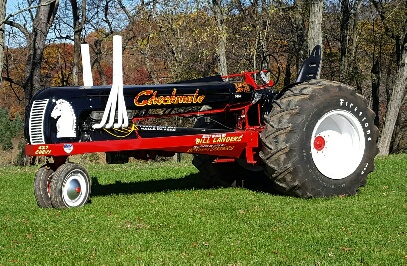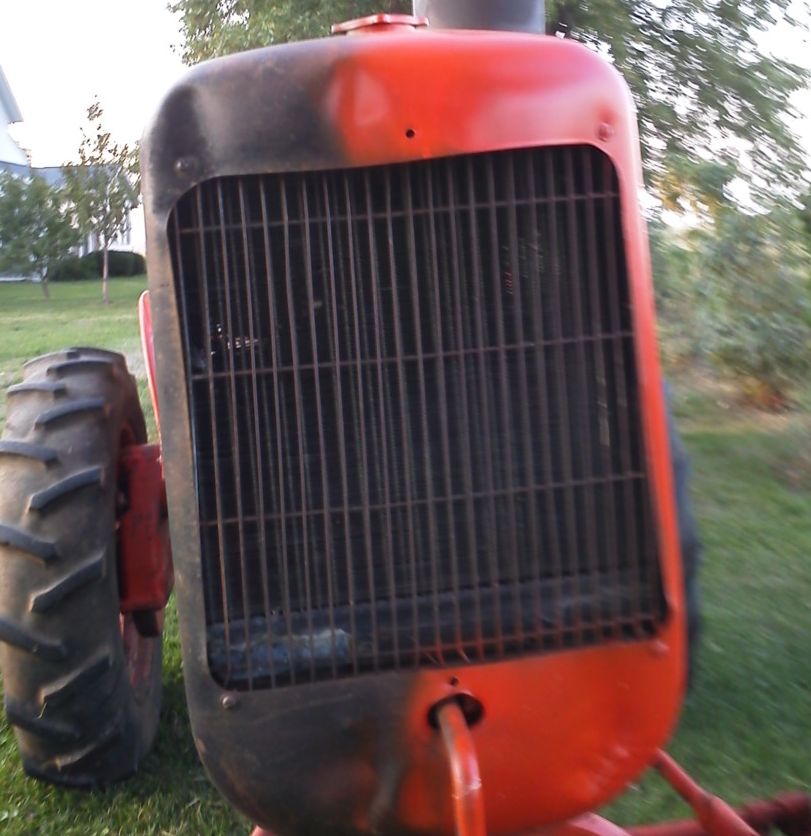Torque is a produced by a function of pressure and leverage. Increasing combustion pressure (adding boost, increasing fuel) helps. In order for that combustion pressure to do work, it must need surface area to act upon.
Let's do some THEORETICAL MATH here:
Let's say the stock bore is 4.25". That's a surface area of 2.125*2.125*3.14 = 14.18 square inches.
Let's say you can push that to 4.5"... that's a surface area of 2.25*2.25*3.14 = 15.89 square inches.
Let's estimate that an 'average' production diesel manages a peak pressure of around 2000psi.
For your smaller bore, that's 2000*14.18= 28360lbs of linear force.
For the larger bore, that's 2000*15.89= 31780lbs of linear force.
Let's say your engine's stroke is 5", and you're considering going to 5.5"...
At 5", With the crank at 90 degrees from TDC, your ratio of force (in foot-lbs) will be 5/12... so torque = piston linear force * 5/12.... or 0.4167
At 5.5", with crank at 90, ratio will be piston linear force *5.5/12... or 0.4583
Let's say you're getting that 2000psi into a 4.25" bore for 28360lbs... that's 28360*0.4167 = 11817 ft-lbs applied to the crank.
Same on a 5.5" crank comes to 28360 * 0..4583= 12997ft-lbs applied to the crank
Doing the same at big bore @ 5" stroke yields 31780*0.4167 = 13242ft-lbs
While big bore @ 5.5" yields 31780*0.4583 = 14654ft-lbs.
Now, increase the combustion pressure to 2500psi:
2500*14.18=35450
2500*15.89=39725
4" bore With 5" stroke = 35450* 0.4167 = 14772
4.5" bore with 5" stroke= 39725*0.4167 = 16553
4" bore with 5.5" stroke = 35450*0.4583 = 16246
4.5" bore with 5.5" stroke = 39725*0.4583 = 18205
Now notice- these are some seemingly astronomical torque figures. yes, this is NOT what you'll see at the flywheel. Why?
Several reasons:
First- max cylinder pressures occur somewhere between firing time, but substantially BEFORE the crank hits 90 degrees.
Second- max cylinder pressure hits that PEAK, but because the piston is MOVING, the cylinder volume is increasing, typically at a FASTER RATE than the combustion can proceed, and maintain that pressure. Effectively, about ONE TENTH of that force results in pressure at the 90 degree mark, and it doesn't last long. Realize that cylinder pressure does the greatest amount of work from 45 degrees after TDC, to 135 degrees. Anything still burning by 135 degrees is, for all practical purposes, wasted, and any substantial pressure generated PRIOR to 45 degrees, is simply stressing the block.
Last- the force that DOES occur in the 45-135 degree arc, is being absorbed in greatest amount, by the inertia of the other pistons, the crank, and the flywheel, so the piston's force is being used to 'keep' the motion through another 585 degrees of rotation... that's (four stroke =) 720 degrees, where only 90 degrees (45 to 135) is being substantially 'pushed'... that's 90/720ths or 0.0125 of the four-cycle engine's operation actually doing work. Take that 18205 from above, and multiply it by 0.0125, and you've got 227ft-lbs from that one piston. Multiply that by six, and you've got 1365ft-lbs. Figure that you lose about 25% of that to internal losses (running oil pump, crankshaft flex, etc) and you've got 1000 or so available at the flywheel.
So... why don't we just delay ignition untill 45 degrees AFTER?
Several reasons-
First, a compression ignition engine doesn't get to choose ignition point... not by much, anyway... it's a function of autoignition temperature of the fuel, and the point at which it's injected into the pressurized chamber. At 45 degrees after, the chamber's pressure is simply too low for autoignition of the fuel to occur.
Second... fuel doesn't burn instantaniously... it burns in a pattern that starts at one point, and moves to another. Imagine throwing a match at one end of a long, skinny pile of leaves. it burns itself along that long pile at a certain rate. Try the same by making a big tall pile, and lighting it right at the top. It burns down, and outward, but once the top leaves burn, the ashes fall on the lower leaves, slowing their burn. Now try lighting it around the perimeter, let it burn in... it'll burn faster, but still, there's an ash-covered pile in the middle that doesn't burn.
Now spread out a nice flat pile, light it in the center... it burns outward, it burns fast, and the leftovers are small, and don't obstruct any other leaves from burning.
Any time you have unburned fuel, you see black ash coming out the
stack. Black ash means incomplete combustion... wasted fuel, and
consequently, that fuel is absorbing combustion heat, making LESS
cylinder pressure. To fix this, either add more oxygen, or more burn
time, or more turbulence in the chamber required to make that a complete
burn... or change the shape of the chamber so that the FLAME MOVES
FASTER.
Third- When running at a constant RPM, the piston, at top dead center, has absolutely NO speed. As the crank rotates, the piston slowly starts to move. As it approaches 45 degrees, it's moving fairly fast... and at 90, it's reached it's highest velocity downward. After that, it slows, and by 135, it's going dramatically slower. At BDC, it's stopped again.
When burning your leaves, if you spread the leaves out DURING the fire, the fire slows down. Why? Because the molecules of air and fuel are getting too far apart to help accellerate the chemical reaction. This means the burn will be incomplete. A short-stroke engine has a natural advantage in this respect- the piston speed from 45 to 135 is proportionally slower than a long-stroke engine. Giving up the leverage, particularly in a slow-burning fuel in a fast-spinning engine, results in a more efficient burn, hence, more 'useful' pressure applied to the piston during the power stroke.
Horsepower is a function of torque and speed. Obviously, if you can make the same torque at a higher speed, you'll have a higher horsepower number. If you cannot spin it faster than 3000rpm, then the only way to get more power, is to increase torque at that speed. Can you make a complete burn occur well in the 45-135 degree arc, then eject the spent charge, clear the chamber, and reload it for the next cycle, over and over again? These factors are why the answer is 'no one' thing- it's a combination of MANY things, all working in concert.
Edited by DaveKamp - 19 Mar 2019 at 10:14pm









 Topic Options
Topic Options

 Post Options
Post Options Thanks(0)
Thanks(0)






 Brian Jasper co. Ia wrote:
Brian Jasper co. Ia wrote: